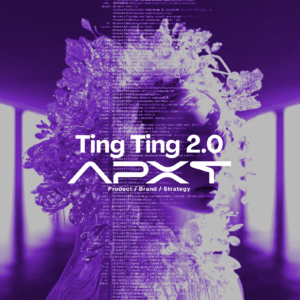3 min read
Introduction:
Recent headlines have painted a grim picture of the NFT market, with reports suggesting that 95% of NFTs are now “worthless.” In this blog post, we’ll delve into the world of NFTs to shed light on their true value and why this news might not be as alarming as it seems. We’ll explore how NFTs serve as a groundbreaking technology that provides creators with a newfound ability to claim their digital creations and how this can open up new possibilities for various industries.
The NFT Market: A Closer Look
According to a study by crypto site dappGambl, the vast majority of NFT collections are now deemed worthless. Out of 73,257 NFT collections identified, a staggering 69,795 have a market cap of zero. Even among the most valuable NFT collections, 18% of NFTs were found to be worthless, and 41% were priced between $5 and $100. These numbers might sound discouraging, but they reflect a broader trend in the NFT market.
Drawing Parallels with Conventional Art
To put this into perspective, consider the conventional art market. In both the NFT and traditional art worlds, a large portion of artworks holds little to no intrinsic value. In fact, research suggests that approximately 97% of all art created falls into this category. This parallel underscores that the value distribution in the NFT market isn’t radically different from that in the traditional art market.
Quality, Consistency, and Artist Persona
So, how can prospective NFT buyers navigate this landscape and find value amidst the noise? Just as in the traditional art world, quality, consistency, and the artist’s persona play crucial roles in determining an NFT’s worth. Rather than solely chasing after high-priced pieces or hyped collections, buyers should focus on the long-term potential of an artist’s work. Is the artist committed to their craft? Do they have a track record of producing quality pieces? These are the questions that should guide collectors.
Differences and Similarities
While there are differences between the digital art and conventional art markets, such as the ease of transfer and verification of authenticity, there are also striking similarities. Both markets are influenced by factors like scarcity, artistic reputation, and cultural relevance. The NFT market’s volatility, much like the art market’s unpredictability, can be seen as an opportunity for savvy collectors who understand the underlying value of the pieces they acquire.
The Future of NFTs
While the recent downturn in NFT values may give pause, it’s essential to remember that NFTs are more than just a speculative investment. They serve as a bridge between the physical and digital worlds, enabling creators to claim their digital assets as products of their creativity. Looking ahead, NFTs hold real-world utility in areas such as gaming, real estate, and digital identity, where their unique capabilities will continue to shine.
Conclusion:
The recent news of a 95% drop in NFT values might have raised eyebrows, but it shouldn’t overshadow the transformative potential of this technology. By drawing parallels with the conventional art market, we can see that the NFT space is still evolving, with plenty of room for growth and innovation. As with any investment, the key to finding value lies in discernment, patience, and a keen eye for quality and potential. So, while the headlines may scream “crash,” remember that beneath the surface, NFTs are reshaping the digital landscape, one blockchain at a time.
Stay Curious, Stay Innovative.
Ting Ting Zhao
Ting Ting Zhao is a Digital Editor at Apxt. Passionate explorer of the intersection between creativity and technology. With an insatiable curiosity, I decode the complex tapestry of design, brand communication, and emerging technologies. As a seasoned critic and strategist, I’m on a mission to demystify the strategic potential of design in the digital age. Join me as we navigate the ever-evolving landscape, unraveling possibilities, and shaping brands that thrive in the dynamic world of innovation.



